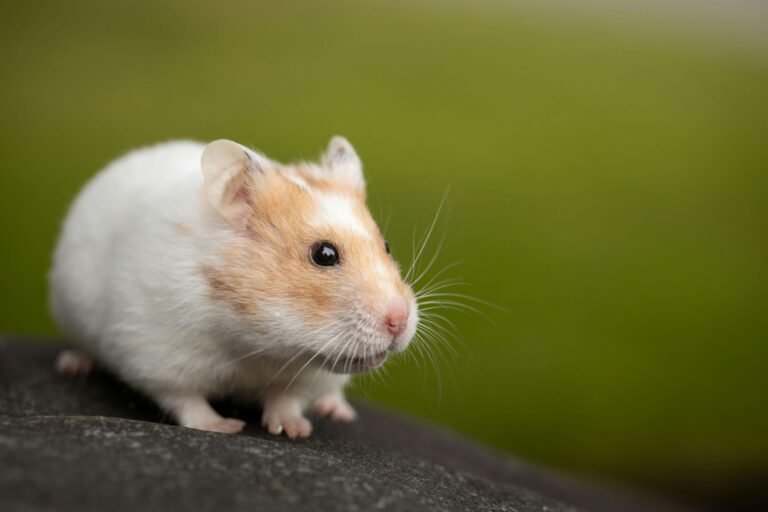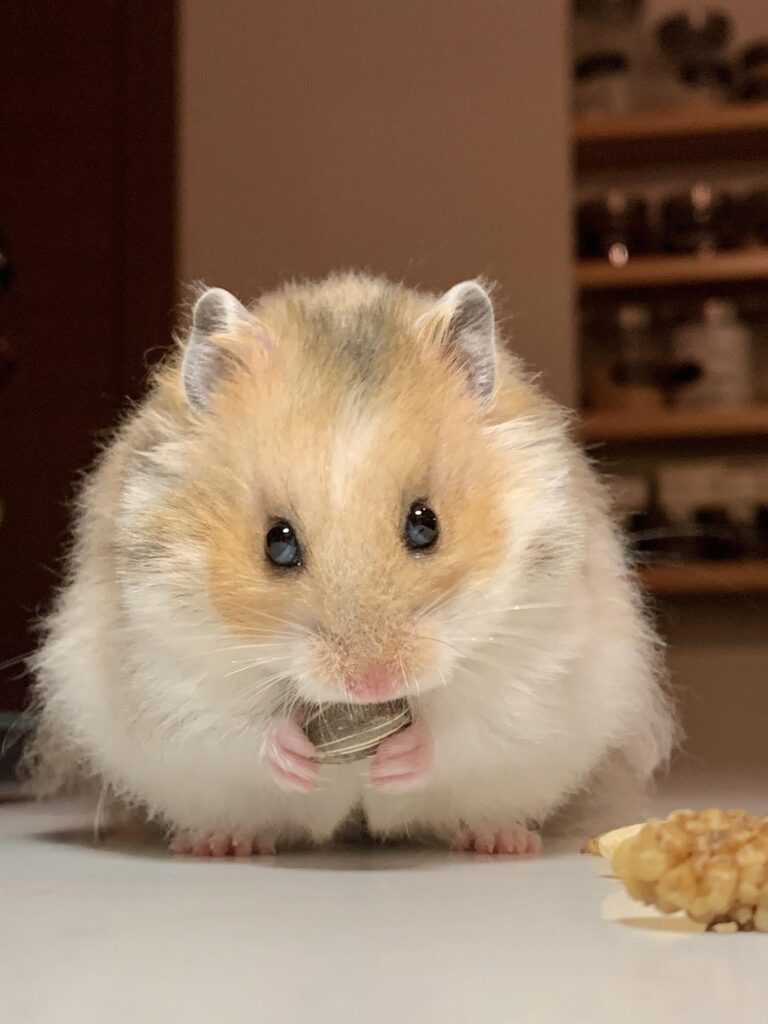Some Bad Habits Of Hamsters – Hamsters.pk
Excessive Chewing and Destructive Behavior in Hamsters: Understanding and Addressing the Issue
Introduction:
Hamsters are adorable and popular pets known for their cute appearance and playful nature. However, many hamster owners face a common problem: excessive chewing and destructive behavior. This article explores the reasons behind this behavior and provides solutions to help hamster owners address the issue effectively.
Why Do Hamsters Chew Excessively?
- Natural Instincts: In the wild, hamsters constantly chew to wear down their continuously growing teeth. This instinctive behavior carries over into domestic life.
- Boredom and Stress: When hamsters lack mental stimulation or experience stress, they may resort to excessive chewing as a coping mechanism.
- Inadequate Chewing Opportunities: If hamsters don’t have access to appropriate chewing materials, they may turn to destructive chewing to satisfy their needs.
The Consequences of Destructive Behavior:
- Damage to Cage and Accessories: Excessive chewing can lead to damage to the hamster’s cage, toys, and other accessories, which can be costly to replace.
- Potential Health Risks: Ingesting inappropriate materials during destructive chewing can cause digestive issues or even lead to intestinal blockages.
- Escape Attempts: Determined chewers may create holes in their cages, increasing the risk of escape and potential harm.
Preventing and Addressing Excessive Chewing:
- Provide Appropriate Chewing Materials: Offer your hamster a variety of safe chewing options, such as wooden chew toys, untreated wicker, and hay cubes.
- Ensure a Stimulating Environment: Create an enriching habitat with tunnels, climbing structures, and foraging opportunities to keep your hamster mentally stimulated.
- Adequate Exercise: Provide your hamster with a spacious cage and an exercise wheel to help burn off excess energy and reduce stress.
- Reinforce Cage Weak Points: Identify areas of the cage prone to chewing and reinforce them with metal or durable plastic guards.
- Supervision and Redirection: Observe your hamster’s behavior and redirect their chewing to appropriate objects when necessary.
When to Seek Veterinary Help:
If your hamster’s excessive chewing persists despite your efforts or if you notice any signs of illness or injury, consult a veterinarian specializing in small animals. They can help identify underlying health issues and provide further guidance.
Conclusion:
Excessive chewing and destructive behavior in hamsters can be frustrating for pet owners, but understanding the reasons behind this behavior is crucial. By providing appropriate chewing materials, creating a stimulating environment, and offering plenty of exercise opportunities, you can help your hamster channel their chewing instincts in a healthy and non-destructive manner. With patience, consistency, and a proactive approach, you can ensure your hamster remains happy, healthy, and well-behaved.

Hoarding and Food Aggression in Hamsters: Understanding the Behavior and Finding Solutions
Introduction:
Hamsters are known for their adorable appearance and lively personality, making them popular pets. However, many hamster owners encounter issues with hoarding and food aggression. This article delves into the reasons behind these behaviors and offers practical solutions to help hamster owners create a harmonious and stress-free environment for their furry friends.
The Instinctive Nature of Hoarding:
- Survival Mechanism: In the wild, hamsters hoard food to ensure a steady supply during times of scarcity. This instinct remains strong in domestic hamsters.
- Caching Behavior: Hamsters have cheek pouches that allow them to transport food to their burrows for storage, a behavior known as caching.
- Sense of Security: Hoarding provides hamsters with a sense of security and control over their food resources.
Food Aggression and Its Triggers:
- Resource Guarding: Hamsters may become aggressive when they feel their food supply is threatened, leading to defensive behavior.
- Territorial Behavior: In multi-hamster households, food aggression can arise as a means of establishing dominance and protecting individual food stores.
- Stress and Anxiety: Environmental stressors, such as inadequate space or social conflicts, can exacerbate food aggression.
The Impact of Hoarding and Food Aggression:
- Nutritional Imbalances: Excessive hoarding can lead to the consumption of spoiled or imbalanced diets, potentially causing health issues.
- Social Tension: Food aggression can create tension and fights among hamsters housed together, compromising their well-being.
- Owner Concerns: Hoarding behavior can cause owners to worry about their hamster’s food intake and overall health.
Managing Hoarding Behavior:
- Proper Food Portions: Provide your hamster with appropriate daily food portions to discourage excessive hoarding.
- Scatter Feeding: Scatter food throughout the cage to encourage natural foraging behavior and reduce hoarding tendencies.
- Regular Cleaning: Remove hoarded food during routine cage cleaning to maintain a fresh and hygienic environment.
Addressing Food Aggression:
- Separate Feeding Areas: In multi-hamster households, provide separate feeding stations to minimize competition and aggression.
- Ample Resources: Ensure each hamster has access to sufficient food, water, and hiding spots to reduce resource guarding.
- Positive Reinforcement: Reward your hamster with treats during calm feeding sessions to foster positive associations.
When to Seek Professional Help:
If hoarding or food aggression persists despite your efforts or if you notice signs of injury or illness, consult a veterinarian experienced in small animal care. They can provide personalized guidance and rule out any underlying health concerns.
Conclusion:
Hoarding and food aggression in hamsters are natural behaviors rooted in their wild instincts. By understanding these behaviors and implementing appropriate management techniques, hamster owners can create a more harmonious and stress-free environment for their pets. Providing proper nutrition, encouraging natural foraging, and addressing social dynamics can go a long way in minimizing hoarding and food aggression. With patience, understanding, and a proactive approach, you can help your hamster thrive and enjoy a happy, healthy life.
Biting and Aggressive Tendencies in Hamsters: Causes, Prevention, and Management
Introduction:
Hamsters are generally known for their gentle and friendly nature, making them popular pets. However, some hamster owners may encounter biting and aggressive tendencies in their furry companions. This article explores the underlying causes of such behavior and provides strategies for prevention and management, ensuring a safe and positive relationship between hamsters and their owners.
Reasons Behind Biting and Aggression:
- Fear and Anxiety: Hamsters may resort to biting when they feel threatened, cornered, or frightened, especially if they are not well-socialized.
- Hamsters are naturally territorial animals and may display aggression to defend their space, resources, or nest.
- Pain or Illness: Biting and aggression can be signs of underlying health issues, such as injuries, infections, or dental problems.
- Lack of Socialization: Hamsters that have not been properly socialized or handled from a young age may be more prone to aggressive behavior.
- Hormonal Changes: During breeding season or in unneutered hamsters, hormonal fluctuations can contribute to increased aggression.
Preventing Biting and Aggression:
- Early Socialization: Regularly handle and interact with your hamster from a young age to foster trust and positive associations.
- Gradual Introduction: When introducing your hamster to new environments or individuals, do so gradually to minimize stress and anxiety.
- Provide Adequate Space: Ensure your hamster has a spacious cage with plenty of hiding spots and room to explore, reducing territorial behavior.
- Respect Boundaries: Learn to recognize your hamster’s body language and respect their boundaries, avoiding forceful interactions.
- Positive Reinforcement: Reward your hamster with treats and praise during calm and positive interactions to encourage good behavior.
Managing Aggressive Behavior:
- Identify Triggers: Observe your hamster’s behavior to identify specific triggers that may provoke aggression, such as sudden movements or loud noises.
- Use Protective Gloves: When handling an aggressive hamster, wear thick gloves to protect your hands from bites while working on socialization.
- Positive Reinforcement Training: Consistently reward your hamster for calm behavior and gradually increase the duration of peaceful interactions.
- Separate Aggressive Hamsters: If you have multiple hamsters and one exhibits persistent aggression, it may be necessary to house them separately for their safety.
- Consult a Veterinarian: If aggression persists or you suspect an underlying health issue, consult a veterinarian for a thorough examination and guidance.
When Biting Requires Medical Attention:
If your hamster’s bite breaks the skin, causes significant bleeding, or shows signs of infection, seek prompt medical attention. Clean the wound thoroughly with soap and water, apply an antibiotic ointment, and monitor for signs of complications.
Conclusion:
Biting and aggressive tendencies in hamsters can be concerning for pet owners, but understanding the underlying causes and implementing preventive measures can help mitigate these behaviors. By providing a safe and comfortable environment, promoting socialization, and using positive reinforcement techniques, you can foster a trusting and affectionate relationship with your hamster. If aggression persists or you have concerns about your hamster’s behavior, don’t hesitate to seek the guidance of a veterinarian specializing in small animal care. With patience, understanding, and appropriate intervention, you can help your hamster overcome aggressive tendencies and enjoy a harmonious life together.

Poor Hygiene and Cleanliness Issues in Hamsters: Causes, Consequences, and Solutions
Introduction:
Hamsters are beloved pets known for their cute appearance and lively personalities. However, poor hygiene and cleanliness issues can arise, leading to a range of health problems and compromising your hamster’s well-being. This article explores the causes of poor hygiene in hamsters, the consequences it can have, and practical solutions to maintain a clean and healthy living environment for your furry friend.
Causes of Poor Hygiene in Hamsters:
- Infrequent Cage Cleaning: Failing to clean your hamster’s cage regularly allows waste, uneaten food, and debris to accumulate, creating an unhygienic environment.
- Overcrowding: Housing too many hamsters in a single cage can lead to rapid waste buildup and difficulty maintaining cleanliness.
- Inadequate Bedding: Using insufficient or low-quality bedding materials can hinder your hamster’s ability to keep themselves clean and dry.
- Poor Diet: A diet lacking essential nutrients can lead to digestive issues and increased waste production, exacerbating hygiene problems.
- Health Issues: Certain health conditions, such as dental problems or mobility issues, can make it challenging for hamsters to groom themselves effectively.
Consequences of Poor Hygiene:
- Skin Irritation and Infections: Prolonged exposure to soiled bedding and waste can cause skin irritation, rashes, and bacterial or fungal infections.
- Respiratory Problems: Ammonia buildup from urine and feces can irritate your hamster’s respiratory system, leading to breathing difficulties and illnesses.
- Digestive Issues: Consuming spoiled food or contaminated water from an unclean cage can cause digestive upset, diarrhea, and other gastrointestinal problems.
- Stress and Behavioral Changes: Living in an unhygienic environment can cause stress and anxiety in hamsters, leading to changes in behavior and overall well-being.
- Unpleasant Odors: Poor cage hygiene can result in strong, unpleasant odors that affect both your hamster and your living space.
Solutions for Maintaining Cleanliness:
- Regular Cage Cleaning: Establish a consistent cleaning schedule, thoroughly cleaning the cage, accessories, and bedding at least once a week.
- Spot Cleaning: Perform daily spot cleaning to remove soiled bedding, uneaten food, and waste, keeping the cage fresh between deep cleanings.
- Appropriate Bedding: Use high-quality, absorbent bedding materials that are safe for hamsters, such as paper-based or wood pulp bedding.
- Proper Waste Disposal: Remove waste and soiled bedding promptly to prevent the buildup of harmful bacteria and odors.
- Balanced Diet: Provide your hamster with a well-balanced diet that meets their nutritional needs, promoting healthy digestion and waste production.
- Regular Health Check-ups: Schedule routine check-ups with a veterinarian to identify and address any underlying health issues that may impact your hamster’s hygiene.
- Adequate Space: Ensure your hamster’s cage is spacious enough to accommodate their needs, reducing the likelihood of rapid waste accumulation.
Conclusion:
Maintaining good hygiene and cleanliness is crucial for the health and happiness of your pet hamster. By understanding the causes and consequences of poor hygiene, you can take proactive steps to create a clean and comfortable living environment. Regular cage cleaning, appropriate bedding, a balanced diet, and addressing any underlying health issues are key to preventing hygiene problems. By prioritizing your hamster’s cleanliness and well-being, you can ensure they live a healthy and thriving life as your cherished companion.











